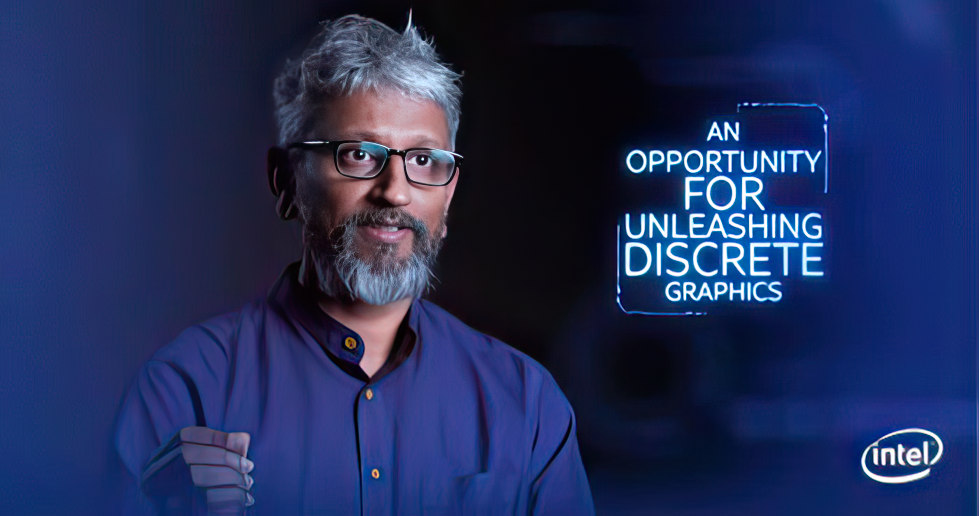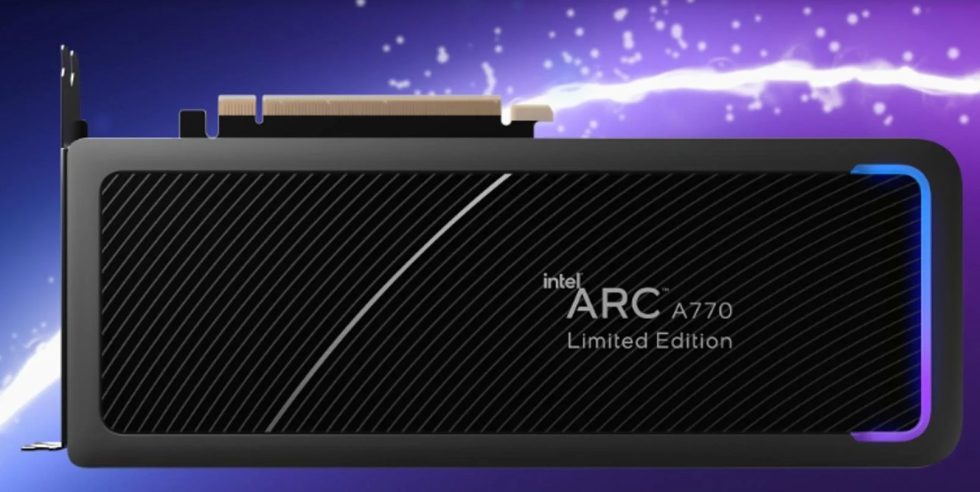Yesterday, CEO Pat Gelsinger (who has been back at Intel since 2021) announced that Raja Koduri is leaving Intel and his positions in the graphics program – he will be leaving for good at the end of March, in just a few days. This comes shortly after the restructuring of the AXG graphics department, where Raja Koduri is no longer director. This was interpreted as evidence that supervisors were not satisfied with Koduri’s results. Do look back briefly. Five years ago, Intel announced that it wanted to compete with Nvidia and AMD and become the third manufacturer of discrete GPUs (gaming and computing).
The face of this groundbreaking move by Intel at the time was Raja Koduri, who moved to Intel directly from the position of head of AMD’s GPU division. The matter took on an even more explosive character, also because Koduri was perceived controversially after the not quite successful Vega GPU generation. And now he is once again at the center of the drama, because his time at Intel is now also over. The Twitter announcement of Raji Koduri’s departure still seems relatively friendly and without criticism, but surely there will be discussions again about whether it is a dismissal due to failure. Raja Koduri also bid a fond farewell to Intel on his own Twitter account, revealing (or Pat Gelsinger’s tweet already says) that he is leaving to start his own startup.
Pleased to share Stu Pann named SVP & GM of Intel Foundry Services. IFS acceleration is key to @intel strategy. Stu’s expertise in capital & capacity strategies, supply chain mgmt + sales & operation planning across internal & external manufacturing make him an ideal leader! https://t.co/pCvCuFcoG1
— Pat Gelsinger (@PGelsinger) March 21, 2023
Career changes are nothing unusual for Raju Koduri. This engineer, who was educated in India (in the field of electronics and communication), even worked at AMD or its graphics department twice. He joined the independent ATi company in 2001, before AMD bought it. Between 2009 and 2013, however, he worked at Apple, but returned to AMD in 2013 to work with others, such as the famous Jim Keller, to revitalize the company. As mentioned earlier, it ended in 2017 after the not-so-successful launch of the Radeon Vega GPU at Intel.
Thank you Pat and @intel for many cherished memories and incredible learning over the past 5 years. Will be embarking on a new chapter in my life, doing a software startup as noted below. Will have more to share in coming weeks. https://t.co/8DcnNdso3r
— Raja Koduri (Bali Makaradhwaja) (@RajaXg) March 21, 2023
His new project is said to be more software-oriented, but dealing with game graphics – using generative AI. If you’ve recently seen a graphics demo in a racing game where AI is generated from real images instead of using traditional modeling, it might be something like that. That Koduri has a new project on the horizon may indicate that he is helping Intel rather than Intel dropping him. Of course, there is a possibility that Koduri knew in advance that his position was uncertain and that the startup was just his Plan B.
Perhaps the most likely scenario also lies somewhere in between. The matter could be related to the aforementioned restructuring. It is possible that Koduri was dissatisfied with the deterioration of his position at Intel (and perhaps some reduction in the importance of the AXG division) and that this led to his decision to leave. Admittedly, the restructuring could also be due to the dissatisfaction of Intel’s top management with him. Raja Koduri introduced the Xe HPG GPU at Intel Architecture Day 2020 (Source: Intel)
One could say that the situation of five years ago is repeating itself and it is again unclear what to think about Raji Koduri’s tenure and end. Even then there were strange feelings about it. Some people probably didn’t know whether to fear that Koduri’s move to the competition would sink the Radeons and cause them to lose out to Intel in the crucial battle for a place in the gaming market – or that Koduri would hurt Intel’s efforts. Malicious tongues also claim that AMD cleverly delegated Raja to Intel in order to harm Intel in the long run. Which is nonsense, of course.
Although Raja Koduri is perceived in a controversial way, in the end there is no denying that he has accomplished a lot at Intel. Five years ago, Intel’s discrete GPU was only a theoretical possibility, the company only had integrated GPUs and more or less lacked a software ecosystem beyond basic display and multimedia functions. Now, after five years, Intel has separate Arc gaming graphics, which may be considered inferior in quality, but still provide real competition to Nvidia GeForce and AMD Radeon graphics.
However, the negative reviews come because of the way Intel’s discrete GPU came to market and the state they are currently in. Much criticism is justified. The question, however, is whether someone could have done a much better job of launching the arc graphic. Perhaps the most noticeable blemish is the delay that the launch of the Arc generation GPU brought – the more relevant gaming models A750 and A770 for the desktop did not come out in the planned year 2021, but only in the fall of 2022.
The high-performance game graphics business is an extremely challenging area, where the two existing players have built up positions that are difficult for newcomers to overcome. Games use a variety of technologies and at the same time specific optimizations or fixes for certain titles, without which they often perform very poorly. The new GPU brand has to keep up in some way with the huge software ecosystem of Nvidia and AMD that has been built up over decades. Sometimes GPU “drivers” and their components and additional functions are compared to a modern operating system – the complexity and scope of this software layer is enormous.
All attempts to compete with Nvidia and ATi/AMD over the last 25 years have failed, and now we can see Chinese companies failing to do so as well. Intel Arc graphics cards are definitely the most viable alternative to GeForce and Radeon graphics cards since the days of 3Dfx. Combined with Intel’s influence and the resources the company can invest, they now appear to be in a position to compete for the long term. Therefore, this project can probably be called a success, and it is possible that this is largely due to Raj Koduri. Much of what appears unsuccessful in his case may simply have been unavoidable. Misunderstood genius or simply overrated? I guess we’ll never know…
































5 Antworten
Kommentar
Lade neue Kommentare
Veteran
Urgestein
Veteran
Mitglied
Veteran
Alle Kommentare lesen unter igor´sLAB Community →